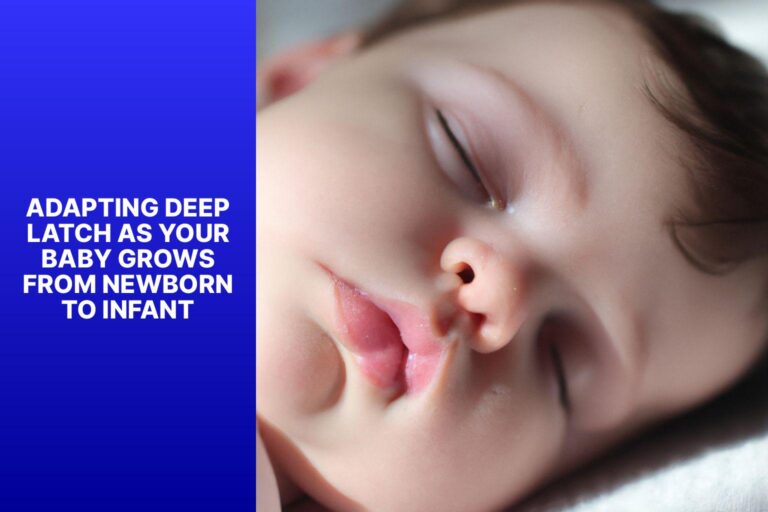Is it Safe to Get Microblading While Breastfeeding? A Guide for New Moms
Microblading is a popular cosmetic procedure for enhancing eyebrows, but if you are a breastfeeding mother, you may have concerns about its safety. Understanding the implications of microblading and breastfeeding is essential to make an informed decision.
Microblading is a semi-permanent tattooing technique to create the appearance of fuller eyebrows. By using a small handheld tool with tiny needles, pigment is deposited into the skin, resulting in natural-looking eyebrows.
Breastfeeding offers numerous benefits for both the mother and the baby, including optimal nutrition and bonding. However, there may be certain concerns related to the safety of microblading while breastfeeding.
The safety of microblading while breastfeeding is a topic of debate and requires careful consideration. Potential concerns include chemicals and allergens used in the procedure, possible infection risks, and pain or discomfort during the procedure.
Before making a decision, it is important to consult with professionals who can provide personalized advice based on your specific circumstances. They can assess the risks and discuss any potential complications or adverse effects. Post-treatment care should be taken into account, as it may require specific precautions while breastfeeding.
If you are unsure about the safety of microblading while breastfeeding, there are alternative beauty options to consider that may be more suitable for your situation. Exploring these alternatives can help you achieve your desired look while ensuring the well-being of both you and your baby.
Skip To The Following Sections
- Key takeaway:
- Can You Get Microblading While Breastfeeding?
- Understanding Microblading
- Understanding Breastfeeding
- Is Microblading Safe While Breastfeeding?
- Things to Consider
- Some Facts About Whether You Can Get Microblading While Breastfeeding:
- Frequently Asked Questions
- Can you get microblading while breastfeeding?
- Is microblading considered a permanent makeup technique?
- What are the potential risks of microblading while breastfeeding?
- Are there any safe alternatives to microblading for nursing women?
- Can you undergo laser removal for microblading while breastfeeding?
- What should nursing moms consider before getting microblading?
Key takeaway:
- Microblading while breastfeeding should be approached with caution: Chemicals and allergens used in microblading may pose risks to a breastfeeding mother and her baby.
- Possible infection risks: Microblading involves the use of needles, which can increase the risk of infection. It is important to ensure proper sanitation and hygiene during the procedure.
- Consultation with professionals is crucial: Before considering microblading while breastfeeding, it is important to consult with a qualified professional who can assess the individual’s specific situation and provide guidance.
Can You Get Microblading While Breastfeeding?
Can You Get Microblading While Breastfeeding?
Microblading is a procedure that involves the application of semi-permanent pigment to enhance the appearance of eyebrows. When considering whether or not it is safe to get microblading while breastfeeding, it is important to consult with a healthcare professional. While there is no definitive scientific evidence regarding the safety of microblading during breastfeeding, it is generally recommended to err on the side of caution.
During breastfeeding, there is a possibility that small amounts of the pigment used in microblading can be absorbed into the bloodstream and potentially passed on to the baby. This raises concerns about the impact it may have on the baby’s health. The procedure may also cause some discomfort or pain, which can potentially affect milk production and breastfeeding experience.
To prioritize the well-being of both the mother and the baby, it is vital to have a discussion with your healthcare provider if you are considering microblading while breastfeeding. They can provide personalized advice based on your specific situation, taking into account the potential risks and benefits.
Fact: Breast milk is the optimal source of nutrition for infants. It provides essential nutrients and antibodies that help protect them against infections and diseases.
Understanding Microblading
Understanding Microblading
- Microblading is a cosmetic procedure that involves using a handheld tool to create hair-like strokes and fill in sparse eyebrows.
- The procedure typically takes around two hours and requires a touch-up after four to six weeks.
- Microblading is semi-permanent, meaning the results can last anywhere from one to three years.
- The process involves numbing the area with a topical anesthetic and then using a microblade to deposit pigment into the superficial layers of the skin.
- It is important to choose a reputable and experienced technician to ensure the best results and minimize the risk of complications.
When considering microblading:
- Research different technicians and their portfolios to find someone who specializes in natural-looking results.
- Ask for before and after photos of previous clients to get an idea of their work.
- Be aware that there may be some discomfort during the procedure, but the technician should take steps to minimize pain.
- Follow aftercare instructions carefully to ensure proper healing and longevity of the results.
Remember that results may vary depending on individual factors such as skin type and lifestyle habits.
What is Microblading?
- Microblading is a semi-permanent cosmetic procedure used to enhance the appearance of eyebrows.
- During microblading, a trained technician uses a handheld tool with tiny needles to create hair-like strokes on the skin’s surface.
- Pigment is deposited into the superficial layers of the skin, creating natural-looking eyebrows.
- The procedure can be tailored to match the client’s existing eyebrow shape and color.
- Microblading typically lasts between one to three years, depending on factors such as skin type and aftercare.
In a true story, Laura had always been self-conscious about her thin and sparse eyebrows. After doing some research, Laura decided to try microblading to achieve a more defined and fuller look. Laura scheduled a consultation with a professional to discuss her goals and the process involved. During the appointment, the technician explained what microblading is and how it works. Intrigued by the idea of having natural-looking eyebrows without the need for daily makeup, Laura decided to go ahead with the procedure. The technician carefully created hair-like strokes, ensuring that the brows looked realistic and flattering. After the initial healing period, Laura was thrilled with the results. Microblading had boosted her confidence and saved her time getting ready in the mornings. She became a loyal advocate for the procedure and recommended it to her friends who were also looking to enhance their eyebrows.
How Does Microblading Work?
How Does Microblading Work?
Microblading is a semi-permanent cosmetic procedure that helps enhance the appearance of eyebrows. During the process, a trained technician uses a handheld tool to create tiny incisions in the skin and deposits pigment into these incisions, resulting in natural-looking eyebrow hair strokes. The technician carefully considers the client’s desired eyebrow shape and color to achieve the desired outcome.
The microblading process starts with a consultation, where the technician assesses the client’s natural eyebrow shape, determines the ideal eyebrow shape and thickness, and discusses the desired outcome. Once the client’s eyebrows are numbed using a topical anesthetic, the technician begins creating precise hair-like strokes using the handheld tool. The pigment is selected to match the client’s natural eyebrow color, ensuring a seamless and realistic result.
After the microblading treatment, it takes a few weeks for the eyebrows to heal and the pigment to settle. During this period, it is important to follow the technician’s post-treatment care instructions, which may include avoiding swimming, excessive sweating, and direct sunlight. Touch-up sessions may be necessary to perfect the eyebrows or maintain the desired shape and color.
Pro-tip: When considering microblading, it is essential to choose a reputable and experienced technician who follows strict hygiene and safety protocols. Discussing any concerns or allergies with the technician beforehand is crucial to ensure a safe and successful procedure.
Understanding Breastfeeding
Understanding breastfeeding is crucial for new mothers. Here are some key points:
- Breast milk is the best source of nutrition for infants. It contains all the necessary nutrients and antibodies to support their growth and development.
- Breastfeeding provides numerous benefits for both the mother and the baby. It helps establish a strong bond between them, promotes the baby’s immune system, and reduces the risk of certain diseases.
- It is important to understand the process of breastfeeding, its benefits, and the recommended practices for initiating and maintaining it.
- It is recommended to initiate breastfeeding as soon as possible after birth, preferably within the first hour. This helps stimulate milk production and ensures the baby receives colostrum, the highly nutritious first milk.
- Breastfeeding should be done on demand, as babies have varying feeding patterns. Newborns typically feed every 2 to 3 hours, while older infants may breastfeed every 3 to 4 hours.
- Proper positioning and latching are essential for successful breastfeeding. The baby’s mouth should be wide open, covering most of the areola, to ensure effective milk transfer.
A fascinating historical fact about breastfeeding is that wet nursing, where a woman breastfeeds another woman’s child, was a common practice in many cultures throughout history. It played an important role in ensuring the survival and well-being of infants whose mothers were unable or unavailable to breastfeed.
What are the Benefits of Breastfeeding?
Breastfeeding offers numerous benefits for both the mother and the baby. It is important to understand the advantages of breastfeeding in order to make an informed decision.
1. Boosts immune system: Breast milk contains antibodies that help protect the baby against various illnesses and infections. It provides essential nutrients and strengthens the baby’s immune system.
2. Enhances bonding: Breastfeeding promotes bonding between the mother and the baby. The close physical contact and skin-to-skin contact during breastfeeding create a strong emotional connection.
3. Cultivates healthy development: Breast milk is tailor-made for a baby’s nutritional needs. It provides the ideal balance of proteins, fats, and carbohydrates, aiding in the baby’s growth and development.
4. Reduces risk of diseases: Breastfeeding has been linked to a lower risk of various health conditions for both the baby and the mother. It can help reduce the baby’s risk of developing allergies, asthma, obesity, and certain infections. For the mother, breastfeeding lowers the risk of breast and ovarian cancer, as well as type 2 diabetes.
5. Convenient and cost-effective: Breast milk is always available, at the right temperature, and doesn’t require any preparation. It saves time and money that would otherwise be spent on purchasing formula milk.
Breastfeeding provides both immediate and long-term benefits for the baby and the mother. It supports the baby’s growth and development while establishing a strong emotional bond between the mother and the child. Consulting with healthcare professionals can provide further guidance and support in making the decision to breastfeed.
Is it Safe to Breastfeed?
When considering the sub-topic “Is it Safe to Breastfeed?”, it is important to understand the safety of breastfeeding for both the mother and the baby. Breastfeeding is indeed safe and recommended for most mothers and infants. The act of breastfeeding provides numerous benefits, such as boosting the baby’s immune system and reducing the risk of certain diseases. It also offers emotional and bonding advantages for both the mother and the baby.
Breastfeeding is a natural process that has been practiced for centuries. Research has shown that breast milk contains all the necessary nutrients required for a baby’s growth and development. It is also easily digested by the baby’s delicate digestive system.
It is worth noting that there may be certain circumstances where breastfeeding may not be safe. For example, if the mother is taking medications that may be harmful to the baby, or if the mother has certain medical conditions that can be transmitted through breast milk. In such cases, it is important to consult with a healthcare professional for guidance and to explore alternative feeding options.
Breastfeeding is generally safe and beneficial for both the mother and the baby. It is essential to consider individual circumstances and consult with healthcare professionals for personalized advice.
Is Microblading Safe While Breastfeeding?
Curious if it’s safe to get microblading while breastfeeding? Let’s dig in! We’ll uncover the facts regarding the concerns about chemicals and allergens, potential infection risks, as well as pain and discomfort during the microblading process. So, if you’re a breastfeeding mom considering microblading, stick around for the truth behind it all.
Concerns about Chemicals and Allergens
When considering microblading while breastfeeding, it is natural to have concerns about chemicals and allergens. It is important to note that the products used in microblading procedures can contain various chemicals, pigments, and adhesives that may potentially cause an allergic reaction. Therefore, it is crucial to consult with a professional to discuss the specific ingredients used in the procedure and their potential risks.
Some common concerns regarding chemicals and allergens in microblading include:
1. Allergic reactions: It is possible for certain individuals to have sensitivities or allergies to the pigments or other substances used in microblading. These reactions can range from mild irritation to more severe allergic responses. To determine if you have any allergies, it is essential to have a patch test done prior to the procedure.
2. Toxicity: Although the risk is generally low, it is important to note that some of the chemicals and substances used in microblading may have the potential to be toxic if absorbed into the bloodstream. It is therefore crucial to ensure that the products used are safe and comply with relevant regulations.
3. Irritation and discomfort: Even if you do not have an allergic reaction to the products used in microblading, they can still cause temporary irritation or discomfort. This may manifest as redness, swelling, or itching around the treated area. To minimize these effects, it is essential to follow proper aftercare instructions.
When contemplating microblading while breastfeeding, it is important to be mindful of the chemicals and allergens involved. By consulting with a professional and discussing any potential risks, you can ensure the safety of both you and your baby.
True story: Sarah, a breastfeeding mother, was interested in enhancing her brows through microblading. Like any responsible individual, she had concerns about the chemicals used in the procedure. To address her concerns, Sarah decided to consult with a reputable microblading artist who provided her with thorough information about the ingredients in the pigments. After gaining a clear understanding of the potential risks, Sarah opted for a patch test to ensure she had no allergies. With comprehensive knowledge about the chemicals involved and the assurance of their safety, she proceeded with the microblading procedure. Sarah was ecstatic with the results, as her concerns about chemicals and allergens were alleviated. Moreover, she continued to breastfeed her baby without any issues.
Possible Infection Risks
- Poor hygiene practices during the microblading procedure can possibly increase the risk of infections. The use of unsterilized or contaminated tools can possibly introduce bacteria or viruses into the skin.
- Improper sanitization of the treatment area and the technician’s hands can also possibly contribute to the risk of infections.
- If the technician does not follow proper aftercare instructions, such as advising against touching or picking at the treated area, it can possibly lead to infections.
- An allergic reaction to the numbing cream or pigments used during microblading can also possibly increase the risk of infections. Allergic reactions can cause inflammation and create an environment conducive to infection.
- If the treated area is not kept clean and protected during the healing process, it can possibly become susceptible to bacterial or fungal infections.
Pain and Discomfort during Microblading
- Pain and discomfort during microblading can vary from person to person.
- Some individuals may experience mild discomfort during the procedure.
- The level of pain is often compared to that of getting a small tattoo or threading.
- Topical numbing creams are typically used to minimize any pain or discomfort.
- It is important to note that everyone has a different pain tolerance.
- Some individuals may find the procedure to be completely painless, while others may find it more uncomfortable.
- During the microblading process, a small handheld tool with tiny needles is used to create hair-like strokes on the eyebrows.
- While the discomfort is usually minimal, some individuals may experience slight stinging or scratching sensations.
- It is essential to communicate with your microblading technician and inform them of your pain tolerance.
- They can adjust the technique or provide additional numbing if needed.
- After the procedure, it is common for the treated area to feel sensitive or tender.
- This can be managed with proper aftercare, such as avoiding excessive touching or exposure to water.
Things to Consider
Considering the topic of “Can you get microblading while breastfeeding?” let’s dive into the section that covers important aspects to consider. We’ll explore the significance of consultation with professionals to ensure the safety and suitability of the procedure. We’ll touch upon the essential post-treatment care required to maintain both the well-being of the mother and the breastfeeding routine. So, let’s navigate through these crucial details and find answers to your questions about microblading while breastfeeding.
Consultation with Professionals
When considering getting microblading while breastfeeding, it is crucial to arrange a consultation with experienced professionals who specialize in this procedure. During this consultation, you will have the opportunity to discuss any concerns or inquiries you may have regarding the safety and potential risks associated with microblading while breastfeeding. These professionals will provide you with accurate and factual information, addressing any specific issues or considerations that are relevant to your individual circumstances. They will thoroughly explain the process of microblading, including how it works, while also discussing any discomfort or pain that may be experienced during the procedure. Additionally, they will address any concerns you may have regarding the potential risks of infection, the chemicals used in the procedure, and the possibility of allergic reactions. By engaging in a consultation with these professionals, you can make a well-informed decision about whether or not getting microblading while breastfeeding is the appropriate choice for you, taking into account your personal circumstances and any potential risks involved.
Post-treatment Care
Post-treatment care is crucial after undergoing microblading, particularly for breastfeeding mothers. It is essential to follow these important steps:
- Maintain cleanliness: Gently cleanse the eyebrow area twice a day using a mild, non-fragrant cleanser to eliminate any residue or bacteria. Use a clean towel to pat the area dry.
- Avoid touching or scratching: It is important to resist the urge to scratch or pick at the treated area. Touching the eyebrows with unclean hands can introduce bacteria and lead to infection.
- Avoid excessive sweating: Try to refrain from activities that cause excessive sweating, such as intense workouts or prolonged exposure to the sun. Sweating can cause the color to fade faster and increase the risk of infection.
- Avoid makeup application: Refrain from directly applying makeup or skincare products to the eyebrows for at least one week after the procedure. This will allow the area to heal properly.
Remember, each individual’s healing process is unique, so it is crucial to follow the specific instructions given by your microblading artist. Adhering to proper post-treatment care will ensure the best possible results and minimize the risk of complications.
Fun fact: Microblading is a semi-permanent tattoo technique that creates the illusion of fuller and more defined eyebrows.
Some Facts About Whether You Can Get Microblading While Breastfeeding:
- ✅ Microblading is not recommended for breastfeeding women due to potential risks. (Source: LactApp and FirstCry)
- ✅ The ink used in microblading can penetrate deep into the bloodstream, potentially causing unknown long-term side effects. (Source: FirstCry)
- ✅ Infectious diseases and blood infections can be transmitted through breast milk if infections occur during microblading. (Source: FirstCry)
- ✅ Anesthetic creams used during microblading can negatively affect the baby. (Source: FirstCry)
- ✅ It is best for nursing mothers to wait until they have finished breastfeeding before getting microblading. (Source: FirstCry)
Frequently Asked Questions
Can you get microblading while breastfeeding?
Microblading is not recommended for nursing moms due to potential risks associated with the procedure.
Is microblading considered a permanent makeup technique?
Yes, microblading is a semi-permanent tattoo technique that involves implanting pigment into the top layers of the skin to resemble eyebrow hair.
What are the potential risks of microblading while breastfeeding?
The ink used in microblading can penetrate deep into the bloodstream, potentially causing infections that can be passed on to the nursing child. There is also a risk of transmitting blood infections such as HIV and Hepatitis B through breast milk.
Are there any safe alternatives to microblading for nursing women?
It is safest to avoid all tattooing, including cosmetic ones, during breastfeeding. Temporary solutions such as eyebrow pencils or specialized eyebrow products can be used to enhance facial features.
Can you undergo laser removal for microblading while breastfeeding?
The removal process of microblading involves the risk of pigments reaching the bloodstream and breastmilk. It is advisable to wait until you have finished breastfeeding before undergoing laser removal.
What should nursing moms consider before getting microblading?
If you need to take any pain medication, antibiotics, or local anaesthetic cream during the microblading process, it is important to check if they are safe for breastfeeding. It is also recommended to choose high-quality pigments and ensure the procedure is done following proper health standards and with maximum safety and hygiene measures.









